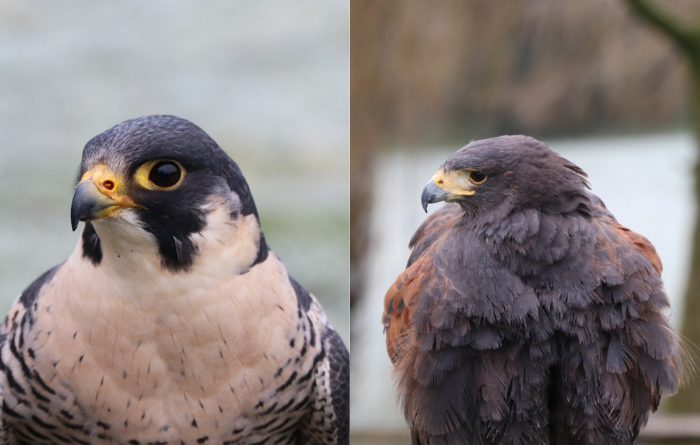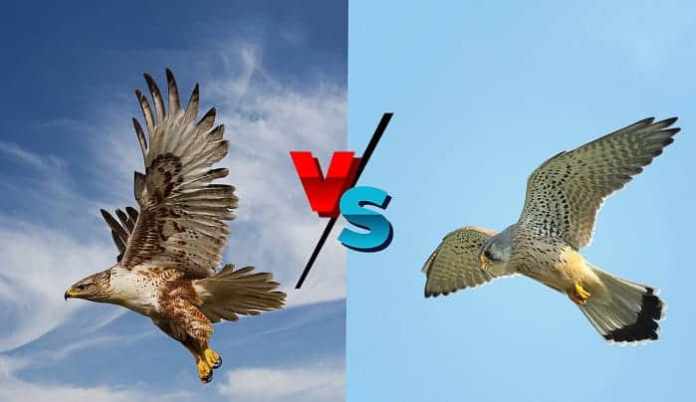Hawk vs Falcon: Understanding the Differences and Similarities. Learn about the intriguing differences and similarities between hawks and falcons. Explore the fascinating world of these remarkable birds of prey, from their physical characteristics and habitats to their hunting techniques and prey preferences. Appreciate their beauty and power while learning about their unique adaptations.
Table of Contents
What is Hawk?
A hawk is a bird of prey characterized by its keen sight, powerful beak, and curved talons. Having broad wings and a long tail, they possess a strong build that aids in flight and maneuverability. It is important to note that hawks come in many shapes, sizes, and colors, ranging from the small and agile Cooper’s hawk to the majestic and large red-tailed hawk.
Types of Hawk
Several species of hawk can be found around the globe, including the red-shouldered hawk, the rough-legged hawk, and the Harris’s hawk. It is important to recognize that each species has its characteristics, including its hunting habits and preferred habitat.
Habitats and Distribution
Globally, hawks inhabit a variety of habitats, including forests, grasslands, deserts, and mountains. The distribution of these species varies according to their species, with some being native to particular regions while others are found across a wide geographical area.
What is Falcon?
The falcon is another group of birds of prey that is well known for its swift and agile flight. Their bodies are streamlined, their wings are long and pointed, and they possess sharp, notched beaks that are known as tomial teeth. The Falcon is the fastest animal on earth during its hunting dives, called stoops, due to its exceptional aerial speed.
Types of Falcons
There are several species of falcons, but the peregrine falcon is well known for its extremely fast diving speeds of over 240 miles per hour. Several other species are also noteworthy, including the American kestrel and the merlin falcon, each of which exhibits distinctive characteristics.
Habitats and Distribution
There is a wide range of habitats in which falcons can be found around the world, including forests, grasslands, and mountainous areas. Some species thrive in cities, nest on tall buildings, and can live in both urban and rural environments.
Physical Characteristics
Hawks’ Physical Features

The physical characteristics of hawks contribute to their ability to hunt. These birds possess sharp, hooked beaks that are designed to tear flesh, and they possess keen eyesight that enables them to detect prey from a distance. The broad wings of these birds allow them to soar and glide effortlessly through the air. A hawk’s talons are also capable of capturing and grasping its prey with ease.
Falcons’ Physical Features
The physical characteristics of falcons set them apart from other birds. Because of their streamlined bodies and long, pointed wings, they are capable of achieving exceptional speeds while in flight. The beaks of falcons are sharp and notched, which enables them to grasp their prey with greater precision. Besides having excellent vision, they are also capable of locating and targeting their prey with great accuracy.
Differences Between Hawk and Falcon
Size and Appearance
A hawk generally has a larger body and a wider wing span than a falcon. As opposed to falcons, which have sleeker bodies and longer wings designed for speed, falcons have sleeker bodies and larger wings. Despite their differences in size and appearance, hawks and falcons share a distinctive body structure that makes them stand out from one another.
Flight Abilities
A falcon is renowned for its exceptional flight speed, although hawks are excellent soarers and gliders. Falcons are capable of flying at remarkable speeds during their diving dives, enabling them to catch their prey mid-air while pursuing it. Hunting by hawks requires agility and patience, and they rely on different flight techniques according to their hunting grounds and prey.
Prey Preferences
The preferences of hawks and falcons when it comes to prey vary. A hawk is an adept hunter and eats a variety of foods, including small mammals, birds, reptiles, and even insects. Falcons, on the other hand, are predominantly predators of other birds, often targeting medium-sized birds in flight.
Behavior and Social Structure
There is a tendency for hawks to live in solitude, except during the breeding season, when they form pairs. Several species establish and defend territories, and some species exhibit elaborate courtship rituals. The peregrine falcon, on the other hand, is known as a more social species and may nest in colonies on buildings or cliffs.
Similarities Between Hawks and Falcons
There are several differences between hawks and falcons, however, they also share several similarities as well. Both species are classified as birds of prey and belong to the same family, Accipitridae. For hunting and capturing their prey, these animals have sharp eyesight, sharp beaks, and strong talons. The aerial prowess of hawks and falcons is often regarded as a symbol of power and grace.
Conclusion
Birds of prey such as hawks and falcons have unique characteristics that make them fascinating. Falcons are renowned for their remarkable speed, streamlined bodies, and precise hunting techniques, whereas hawks are characterized by their broad wings, sharp vision, and versatile hunting strategies.
Both falcons and hawks are remarkable hunters and possess adaptations that make them formidable aerial predators, regardless of their size, flight abilities, prey preferences, and social behaviors.
The distinctions and similarities between hawks and falcons enable us to appreciate the diversity of avian life and the incredible adaptations that allow these birds to thrive in diverse environments. Hawks and falcons possess the beauty and power of nature, whether they are soaring gracefully in search of prey or diving at astounding speeds to capture their prey.
















